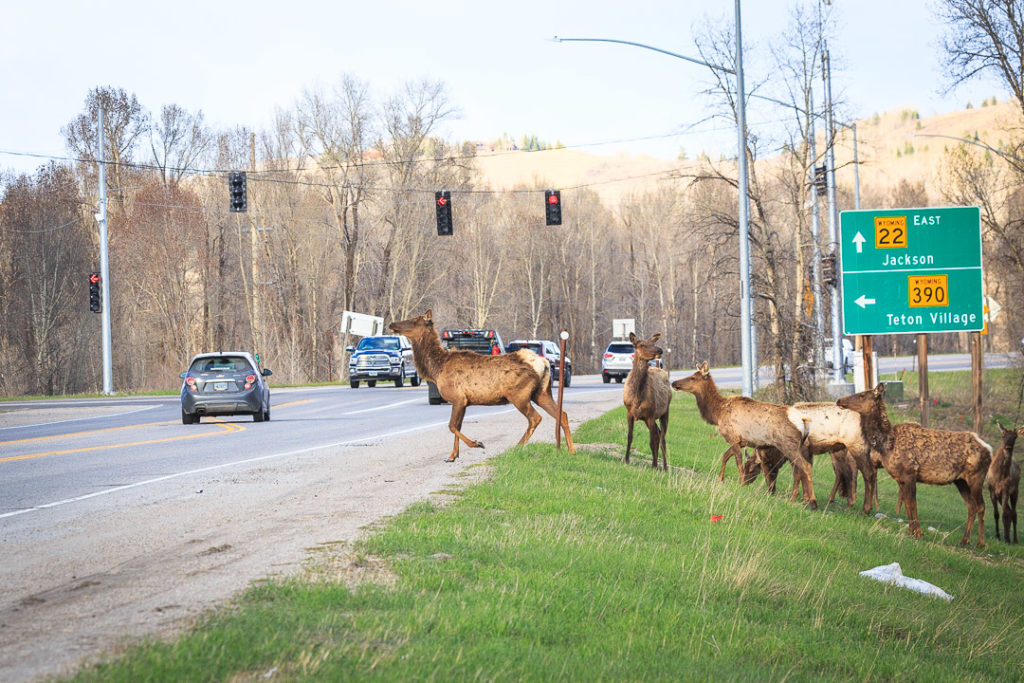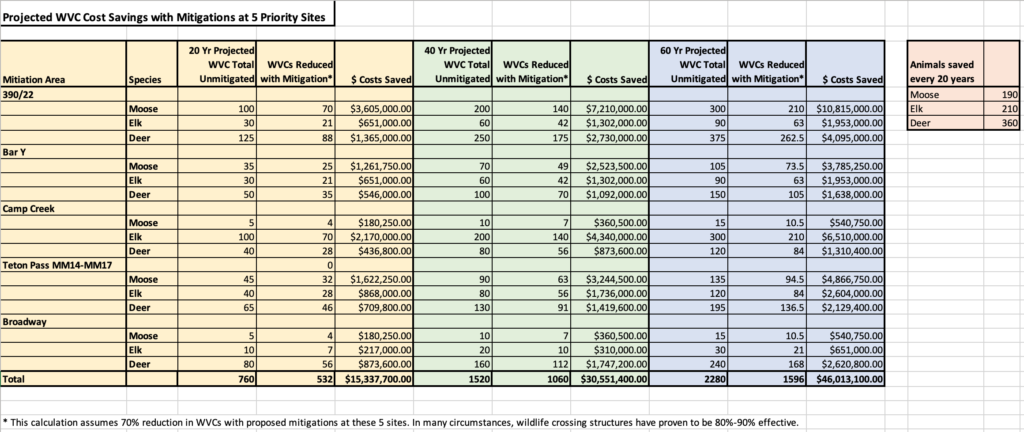by Jon Mobeck, Executive Director
“Preserve and protect the area’s ecosystem in order to ensure a healthy environment, community and economy for current and future generations.” – Teton County Comprehensive Plan’s Vision Statement, adopted 2012
In July 2019, the Jackson Town Council and Teton County Board of County Commissioners voted to add to a November, Specific Purpose Excise Tax (SPET) ballot measure that will allocate (if voters approve) $10M for wildlife crossing solutions at sites prioritized within the County’s Wildlife Crossings Master Plan.
While there are many worthwhile and necessary projects on the slate, we believe that wildlife crossing solutions address the vision of our Comprehensive Plan (quoted above) precisely, warranting commensurate investment. Oddly, and despite the fact that the community has repeatedly stated that wildlife is a paramount value, the community has had very few opportunities to voluntarily invest in the preservation of wildlife or our ecosystem. In the case of the SPET, the burden of that investment is shared by both local residents and tourists. That cost-share for the benefit of wildlife makes sense, since our local economy rests on the health of a globally significant ecosystem that requires wide-ranging stewardship.

Photo by Josh Metten
What about the question of “how much?” While we intuitively value “saved wildlife,” safer highways and connected habitats, those intangible benefits are difficult to measure. Most cost-benefit analyses look at the tangible costs of wildlife-vehicle collisions (WVC) to ungulates (many other small and large animals are hit by cars in our valley, including hawks, eagles, owls and osprey). Those costs include vehicle damages, bodily injury, carcass removal/disposal and the “game value” of the animal as assigned by the Wyoming Game & Fish Department. The “wildlife-vehicle collision costs per species” varies from state to state, but for our purposes in Wyoming, we estimate those costs as follows:
Moose = $51,500
Elk = $31,000
Deer = $15,600
The differences in these costs correlates to the size of the animal and the related severity of a collision. To analyze the efficacy of wildlife crossing structures at these specific prioritized sites, we project the current 5-year WVC trends (from the Teton County Wildlife-Vehicle Collision Database that we manage) into the future and assign a WVC Cost Per Species as listed above. We then calculate the cost saved through estimated WVCs reduced. None of these numbers reflect the value of moose, elk or deer to our tourism economy, nor do they reflect the value of the animal within our particular ecosystem or community. Jackson Hole values moose and elk extremely highly, partly due to their intensely-monitored populations, but also because they are iconic symbols of this wild place, and veritable neighbors to many around the valley.
Wildlife crossing structures have been shown to reduce ungulate WVCs by 80-90% when appropriately fenced, but they are not the only or best solution everywhere. In some cases, the geologic/geographic/hydrologic properties of a location preclude effective structural solutions. In other places – especially roadways of 40 mph or lower – a variety of tools can be deployed to positively affect WVC-reduction at a good “cost-per WVC reduced.” Those tools are being used in the town of Jackson, along the WY390 route, and soon in the town of Wilson to slow drivers and increase the probability of avoiding collisions with animals. We use the same cost-benefit formula to assess the efficacy of any tool deployed in any location, enabling the best solutions based on the variables present at each site.
We feel that the four “top priorities” considered within this measure are best addressed with structural solutions. The spreadsheet below includes WVC projections and the economic value of WVC costs saved over 20-year intervals at five prioritized locations (WY390/WY22 intersection, WY22/Bar Y, WY189/WY181 Camp Creek/Hoback, WY22 Teton Pass West MM 14-17, and West Broadway in the town of Jackson – the non-structural solution in this mix). These numbers do not incorporate inflation, and while they are estimates based on current trends in each location, the extrapolated numbers (rounded for simplicity) do not consider changing population or distribution dynamics over time, which is likely to occur to some degree. Each site was analyzed as a two-mile stretch of highway, with the exception of West Broadway, which is a one-mile site. Click on the spreadsheet below to enlarge.
What we find is that appropriate mitigation measures installed at these 5 sites should pay for itself in WVC cost savings in about 20 years, and perhaps less. While appropriate mitigation measures at all sites will likely exceed $10 million dollars, if we conservatively assume that the measures we can take in these 5 locations will ultimately reduce current WVCs by 70% (recognizing some limitations in a few of these sites), we would save just over $15M in 20 years. After that 20-year period, future savings (an additional $31M over the ensuing 40 years of a structure’s expected 75-year lifespan) exceed the cost of the solutions implemented. That is a good use of public money, especially when considering that this public money is invested expressly to realize the vision of the County’s Comprehensive Plan. We aim to be conservative in our estimates as we place a high value on the efficient use of public funds.
I hope that you will agree with Jackson Hole Wildlife Foundation, Greater Yellowstone Coalition, Jackson Hole Conservation Alliance and countless other community members that a $10M SPET investment in solutions for these sites is an extremely prudent investment for our community. It’s not always easy to measure the value of a publicly-funded item, but in this case, we can make an easy economic case for the value of our foresighted action. These actions, combined with other site-specific solutions elsewhere, will make our highway network safer for drivers and wildlife.
To learn more about WVC solution opportunities at many of the County’s prioritized sites, please review this Wildlife Crossings Master Plan Action Summary to which Jackson Hole Wildlife Foundation contributed.


